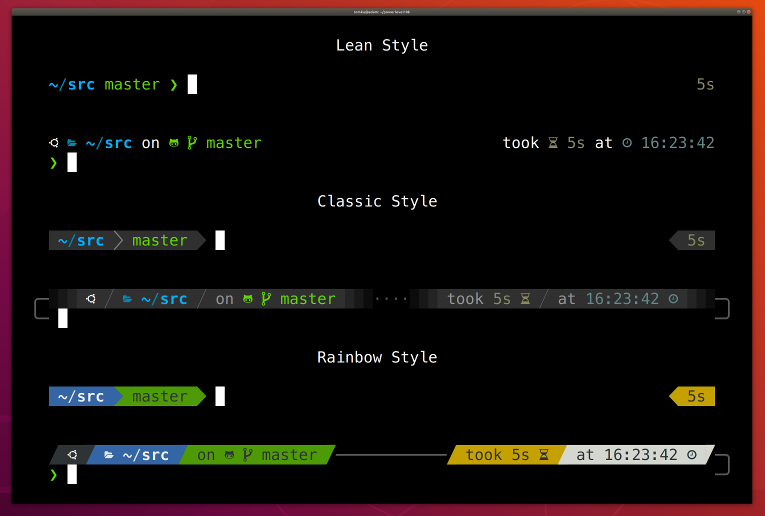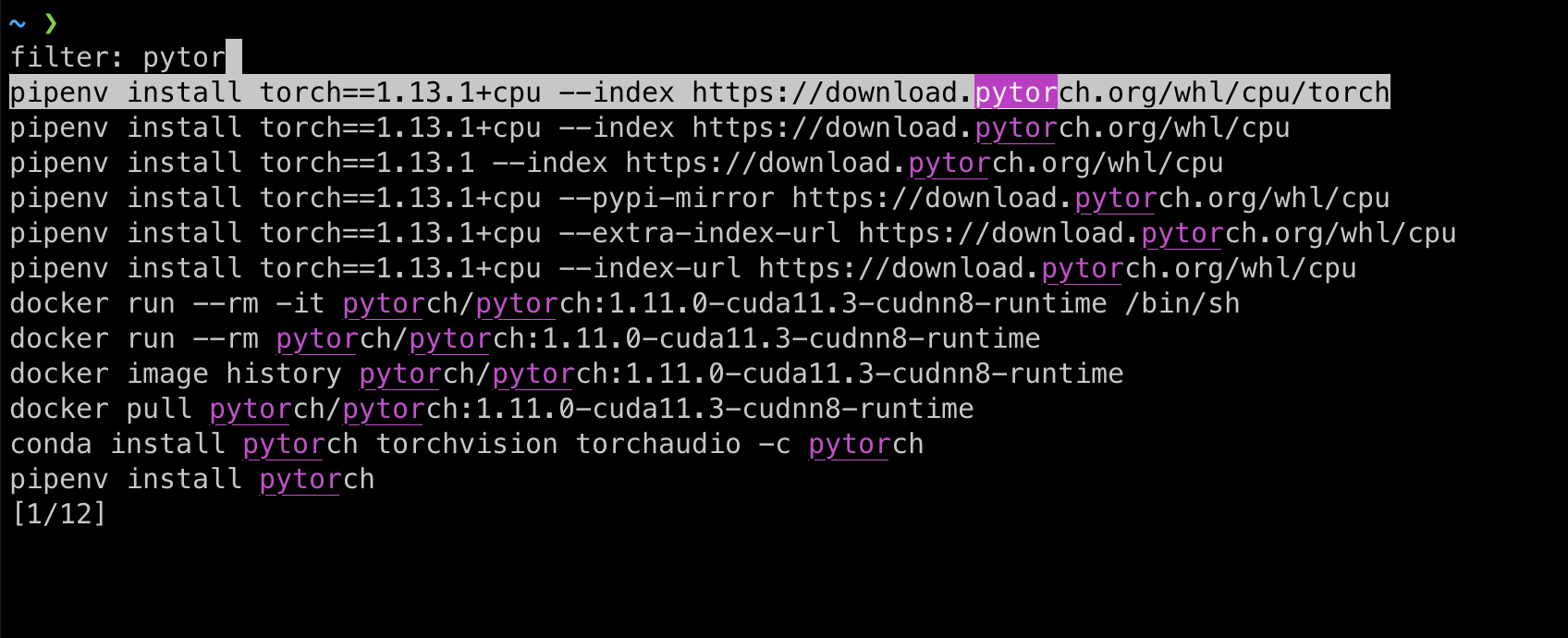In this post I’m going to share the setup and configuration of the terminal and shell I use on macOS. I don’t consider myself an advanced shell user, but there’s some useful stuff that might be helpful to some.
iTerm2
I’m using iTerm2 and not the default macOS terminal because… this is what everyone does?
I’ve changed a few settings in the iTerm2 preferences, after duplicating the default profile. Specifically, I:
- changed “minimum contrast” to 50, it works better with the colors used by my zsh theme (there’s a probably a better way)
- changed the default window size from 80x25 to 110x28 and the font size from 13 to 15
- enabled unlimited scrollback
- replaced the key mappings with the “Natural Text Editing” preset. This makes it possible to move between “words” with Option+arrows, and other stuff
zsh
Not gonna lie, I’m using zsh because it’s the default on macOS.
However, there are lots of features that make it better than bash out of the box. One of these is the improved tab completion when choosing files or directories:
There are so many other tricks like this and I probably don’t even know most of them.
Oh My Zsh
Oh My Zsh not only makes it easier to install plugins and themes, but also comes with defaults, helpers and aliases that improve the overall experience in the terminal.
For example, ll as an alias of ls -lh.
powerlevel10k
powerlevel10k is one of the most used themes for zsh and can be easily customized.
It comes with “segments”, which are additional labels decorating the prompt.
I personally use the lean style with some tweaks, but there are many other possible configurations.

zaw
zaw is a replacement for the CTRL-R (^R) reverse history search. I use it all the time.

(☝️ me trying to install PyTorch for CPU)
To install it, follow the instructions in the GitHub repositiory and then add the following to your .zshrc, which are good defaults:
bindkey '^R' zaw-history
zstyle ':filter-select' case-insensitive yes
zstyle ':filter-select' extended-search yes
zstyle ':filter-select' hist-find-no-dups yes
zsh options
These are some options that I changed. I put these in the .zshrc file:
- Added
setopt no_share_historyso that the histories of different tabs/windows of the terminal aren’t shared (i.e. when you pressUpyou don’t see commands from other shell instances) - Added
setopt histignorespaceto keep commands starting with a space from being saved in the history. This is helpful when you need to store secrets in environment variables. For example, you can use⎵export TOKEN=...(space beforeexport) - Uncommented the line that says
DISABLE_MAGIC_FUNCTIONS="true"to stop pasted links from being escaped. This solves the issue of having symbols like?being escaped as\?, which often creates more issues than it solves
zsh plugins
I use the following three plugins:
plugins=(git sudo zsh-syntax-highlighting)
gitadds git information to the promptsudomakes it possible to re-execute the last command with sudo, just by pressingesctwicezsh-syntax-highlightinghighlights the syntax of the commands as you write
I’ve also used zsh-autosuggestions for a while but it confused me more than it helped.
Other integrations
I also use:
- 1Password SSH/git integration: the password manager is my keystore and my fingerprint replaces the passphrases of the keys
- I previously used a variant of this script to have the
ssh-agentremember the passphrases of my keys for a few hours after entering them for the first time. If you’re interested, leave a comment
- I previously used a variant of this script to have the
- GitHub Copilot for CLI: having an AI to generate commands is often useful for tools I’ll never manage to learn, like
jqorawk
I’ll try to keep this updated as my setup changes. If you have anything to share, leave a comment 👇